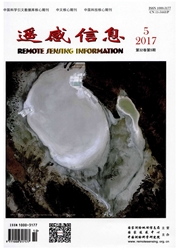

 中文摘要:
中文摘要:
利用SBDART模式正演了主要云类在多光谱通道上的光谱特性,分析了在由不同通道组成的二维光谱空间中的云类分布;又以MTSAT-2多光谱静止卫星观测资料与CloudSat云廓线雷达分类产品匹配,建立了包含诸主要云类光谱特性的数据对。在此基础上,采用单位特征空间归类分析法,反演并分析了各典型云类在相应二维光谱空间中的分布范围和高频集群分布特点;结合正、反演结果,应用最小距离分类与最大似然估计方法进行了云分类试验研究。经过单位特征空间方法的调整,最终确定了较为准确的适用于全天时云分类的判据。检验结果表明:根据多通道的云光谱特性区分高、中、低云和对流性及非对流性降水云是可行的,由此能够实现全天时云系生消、移动的连续可靠监测。
 英文摘要:
英文摘要:
A forward-modeling about the spectrum characteristics in multispectral wavebands of principal types of clouds has been conducted, and their distributions in different two-dimensional (2-D) spectral space are analyzed. Satellite data in multi- spectral wavebands from Multi-function Transport Satellites (MTSAT-2) are compared with cloud classification products from CloudSat Cloud-Profiling Radar (CPR) to produce data pairs containing the spectrum characteristics of principal types of cloud. On the basis of above work, a method named UnivFeature Spatial Classification Method (UFSM) is introduced to retrieve the distribution range and location of high frequency feature points of clouds in the 2-D spectral space. Two different types of sta tistieal methods, i.e. Minimum Distance Classification and Maximum Likelihood Estimation, are then applied to the results from forward-modeling and inversion in the cloud classification experiment. The UFSM is finally adjusted to bring out compara- tively accurate cloud-classification criterions that can be used over the entire day. Results indicate it was feasible to distinguish high, middle, and low clouds, and clouds with/without vertical development according to the spectral characteristics. As a re sult, clouds dissipation and movement can be monitored reliably and continuously.
 同期刊论文项目
同期刊论文项目
 同项目期刊论文
同项目期刊论文
 期刊信息
期刊信息
